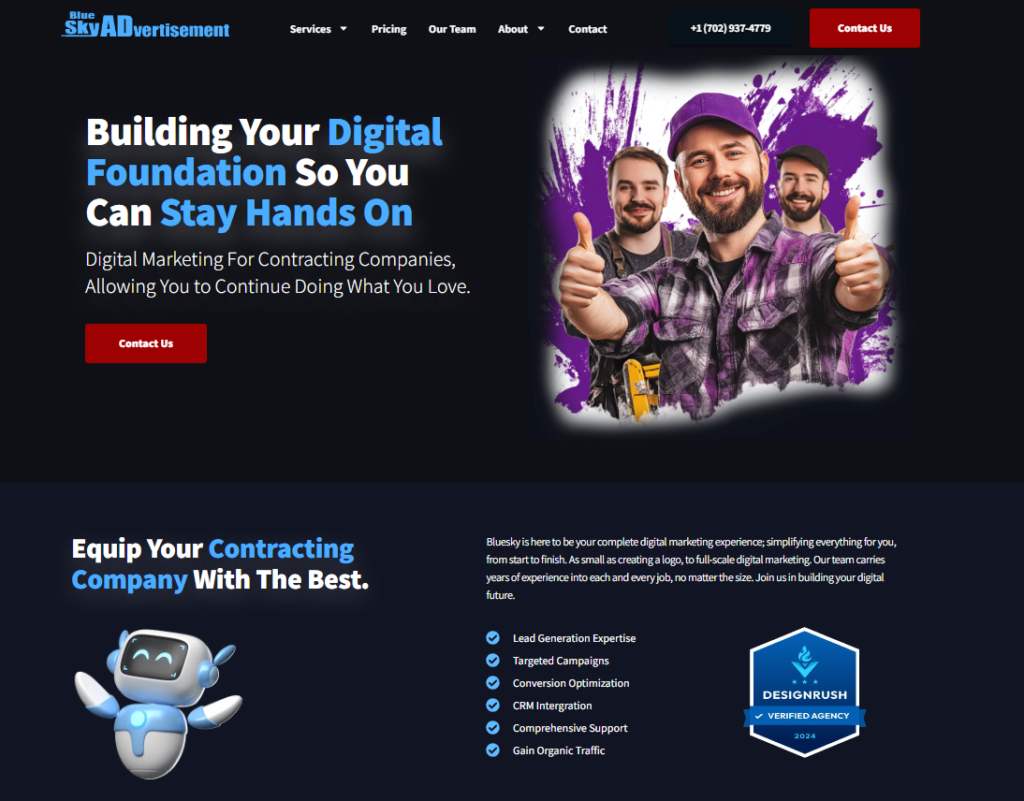How much value are you leaving on the table by not repurposing your content?
What a year for digital advancements, 2024 has been, so creating fresh content consistently can be a daunting task. But what if you could unlock hidden value in the content you already have?
Unlocking the power of repurposed content with Blue Sky Advertisement can amplify your reach, save resources, and boost your ROI in 2024.
Understanding Content Repurposing

What is content repurposing, and why does it matter?
Content repurposing involves taking existing content and transforming it into new formats or updating it for new platforms. This strategy isn’t just about recycling content—it’s about maximizing its value and extending its lifespan.
Benefits for businesses, including scalability and efficiency
- Scalability: By repurposing, you can scale your content efforts without exponentially increasing resources.
- Efficiency: It saves time and money, reducing the need to create new content from scratch constantly.
- Enhanced ROI Potential: Extending the life of your content means your initial investment works harder and delivers more overtime.
How content lifecycle management makes your investment works harder for longer
Managing your content’s lifecycle means strategically planning its creation, distribution, and repurposing. This means that each piece of content continues to deliver value, reaching new audiences and adapting to changing trends.
Strategic Planning for Repurposing

Steps for a comprehensive content audit
- Inventory Your Content: Compile all existing content assets.
- Analyze Performance: Identify which pieces have performed well.
- Assess Relevance: Determine if the content is still relevant or can be updated.
Identifying opportunities: spotting content gems for repurposing
Look for content that had high engagement, timeless topics, or pieces that can be easily updated with new information. These are your “content gems” ripe for repurposing.
Selecting evergreen content to guarantee long-term relevance
Evergreen content remains relevant over time. Focusing on these pieces makes sure that your repurposed content continues to attract and engage audiences long after it’s published.
Planning for specific channels: tailoring strategies for different platforms
Different platforms require different approaches. Plan how to adapt your content to fit the style and audience of each platform, whether it’s a professional article on LinkedIn or a visual story on Instagram.
Core Methods for Repurposing Content
Transforming blog posts into shareable content formats
- Infographics: Turn key data points into visually appealing graphics.
- Slide Decks: Summarize blog points into slides for platforms like SlideShare.
- Short Videos: Create video summaries or animations highlighting main ideas.
Breaking down long-form content into bite-sized pieces
- Social Media Posts: Extract quotes or tips for quick posts.
- Email Snippets: Use sections in newsletters to drive traffic back to the full content.
Turning written content into visually engaging formats
Visual content often has higher engagement rates. Transforming text into visuals like infographics, videos, or images can make your content more digestible and shareable.
Adapting core ideas for social media trends and audiences
Stay current with social media trends, like hashtags or challenges, and adapt your content to fit these trends while still conveying your core message.
Channel-Specific Repurposing Strategies

How to tailor content for various social media platforms
- Facebook: Longer posts with images or videos.
- Twitter: Short, punchy updates with relevant hashtags.
- Instagram: High-quality visuals with engaging captions.
- LinkedIn: Professional insights and industry news.
Repurposing for email marketing campaigns
Incorporate snippets of your content into emails, tease new content, or provide summaries with links to the full versions.
Leveraging guest posting opportunities for extended reach
Adapt your content for guest posts on industry blogs or publications, reaching new audiences and establishing authority.
Adapting content for multimedia platforms, from YouTube to podcasts
- YouTube: Create videos explaining or expanding on your content.
- Podcasts: Discuss your content topics in audio format for listeners on the go.
Content Types and Formats to Repurpose
Turning blogs into social media series or posts
Break down your blog into a series of posts, each highlighting a key point or takeaway.
Adapting video content into text, graphics, and more
Transcribe videos into blog posts, extract audio for podcasts, or create graphics from video content.
Repurposing podcasts into blogs, social media, or infographics
Use podcast transcripts as the basis for articles, pull quotes for social media, or visualize statistics discussed in infographics.
Crafting infographics and newsletters for audience engagement
Summarize complex information into infographics or compile recent content highlights into a newsletter.
Implementation Workflow for Smooth Repurposing

Creating content with future repurposing in mind
When creating new content, plan for how it can be repurposed. Outline potential formats and platforms during the content creation phase.
A systematic approach to transforming content across formats
Develop a workflow that includes steps for repurposing, such as:
- Content Creation
- Primary Publishing
- Repurposing Plan Execution
- Distribution Across Channels
Quality control: making consistency meet brand alignment
Maintain brand voice and messaging across all repurposed content. Implement editorial guidelines and review processes.
Setting a realistic distribution timeline for maximum impact
Schedule your repurposed content strategically to keep your audience engaged without overwhelming them.
Advanced Techniques for Optimized Repurposing
Cross-platform optimization for cohesive messaging
Making sure that your content tells a consistent story across all platforms, tailored to the nuances of each.
SEO-focused adjustments to enhance visibility
Strategies for keeping content updated and relevant
Regularly review and update repurposed content with new data, insights, or trends to maintain its relevance.
Audience targeting: customizing repurposed content to specific groups
Segment your audience and tailor content to address the specific needs and interests of each group.
Measurement and Optimization of Repurposed Content

Tracking performance with analytics tools
Use tools like Google Analytics, social media insights, and email metrics to monitor how your repurposed content performs.
Measuring content effectiveness to refine your strategy
Assess metrics such as engagement, conversion rates, and shares to determine what’s working.
Calculating ROI to assess the value of repurposed efforts
Compare the performance metrics against the resources invested to understand the return on your repurposing strategies.
Best Practices and Expert Tips
Techniques to save time without compromising quality
- Templates: Use templates for consistent formatting.
- Automation Tools: Leverage tools to schedule posts and track performance.
Maintaining brand consistency across all platforms and formats
Adhere to brand guidelines for tone, style, and visuals in every piece of content.
Establishing a schedule to update and repurpose regularly
Create a content calendar that includes repurposing activities to keep your strategy on track.
By thoughtfully repurposing your content, you can significantly amplify your reach and impact in 2024. Start by auditing your existing content, identify opportunities for repurposing, and implement a strategic plan tailored to your audience and platforms. Remember, the goal is not just to recycle content, but to reinvent it in ways that provide ongoing value to your audience and maximize your ROI.
Actionable Next Steps:
- Perform a Content Audit: Identify your top-performing and evergreen content.
- Develop a Repurposing Plan: Choose formats and platforms that align with your goals.
- Implement and Monitor: Start repurposing your content and track the results.
- Refine Your Strategy: Use insights from analytics to optimize your approach.
Unlock the full potential of your content today by contacting us and watch your ROI soar in the year ahead!
Would you like to learn more? Check out our blog!





